
For Hippos, Their Charismatic Looks Won't Keep Them Safe (Photos)
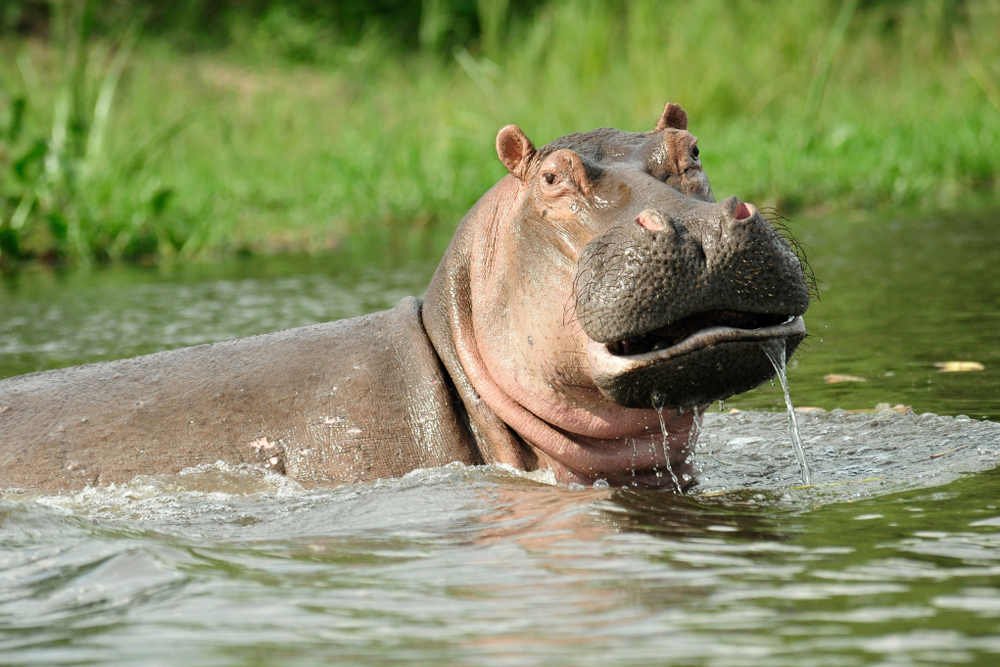
Julie Larsen Maher is staff photographer for the Wildlife Conservation Society (WCS), and the first woman to hold the position since the society's founding in 1895. In addition to documenting conservation work in some of WCS' 500 field programs in 60 countries around the world, Maher photographs animals and events at WCS' five New York-based wildlife parks: the Bronx Zoo, Central Park Zoo, New York Aquarium, Prospect Park Zoo and Queens Zoo. The author contributed this article to Live Science's Expert Voices: Op-Ed & Insights.
With a name derived from the Greek words for "river horse," hippopotamuses are semiaquatic herbivores that live their lives in water, except for evening rituals when they follow well-worn paths up riverbanks to feeding grounds.
Low-slung with big bellies, hippos appear awkward on land , but they are fast runners for their size (more than 9,000 pounds for some adult males) and can cover great distances when defending their territory or searching for food. Male hippos regularly take over a length of riverbank to establish mating territory. Sometimes, these squatting rights result in fierce battles, during which the males bellow loudly and bare their huge canine teeth.
Despite their reputation for bad tempers, hippos are not their own worst enemies. Because of illegal and unregulated hunting for hippo meat and teeth (a source of ivory for export), hippos now have a "vulnerable" status on the Red List of threatened species maintained by the International Union for Conservation of Nature (IUCN). Eastern African countries — including Tanzania, Uganda and Zambia — are among the few remaining strongholds for the world's third-largest land mammal.
Hippos rely on freshwater habitats, which puts the animals at odds with humans, who have growing needs for the same. More and more land is being cleared for people to plant crops like cotton and tobacco, creating runoff downriver that silts up rivers and shrinks waterholes for Africa's remaining hippo population. In southern Tanzania, hippos have problems finding freshwater. The Great Ruaha, which drains into the Indian Ocean and was once a vast and permanent river, has been slowly drying up inside Ruaha National Park due to large-scale rice-irrigation schemes upstream. The situation has grown so bad that the river now stops completely for several months a year, during which time the hippos are seriously threatened.
"We are working with national parks and local communities to try and minimize impacts from illegal water withdrawal," said Wildlife Conservation Society Tanzania Country Director Tim Davenport. "Meanwhile, we are monitoring the hundreds of hippos that live there to try to ensure that they survive until the Great Ruaha flows all year round once more." (Credit: Julie Larsen Maher ©WCS)
Unexpectedly agile
Sign up for the Live Science daily newsletter now
Get the world’s most fascinating discoveries delivered straight to your inbox.
Hippos are mobile in water and spend most of the day in rivers and muddy pools to keep their skin moist and cool.
Best of both worlds
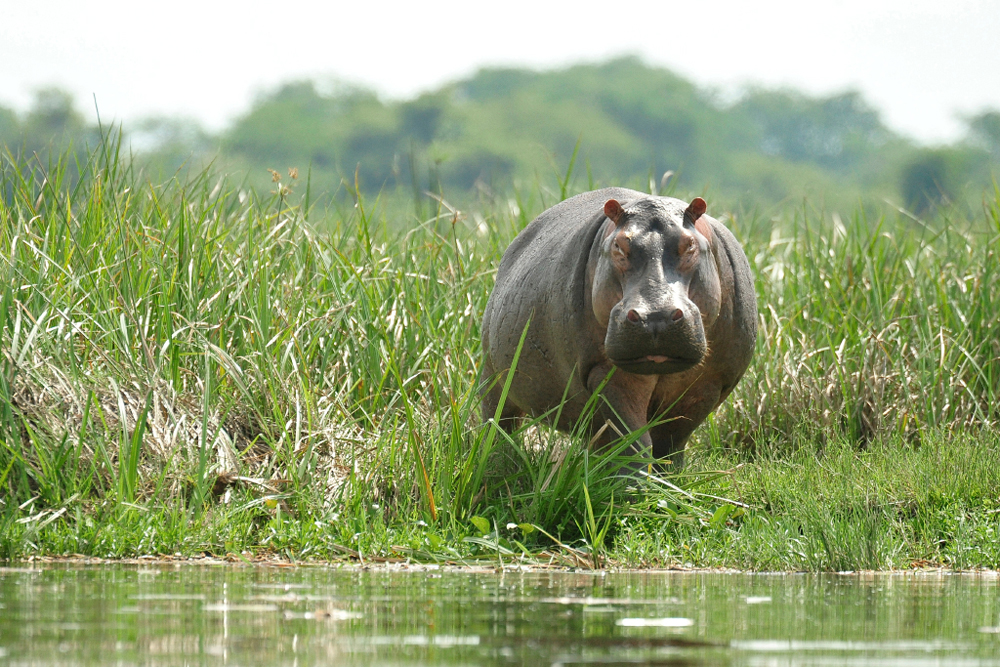
Hippos are amphibious mammals that spend their days in the water and nights on land, where they graze on grass.
Home sweet home
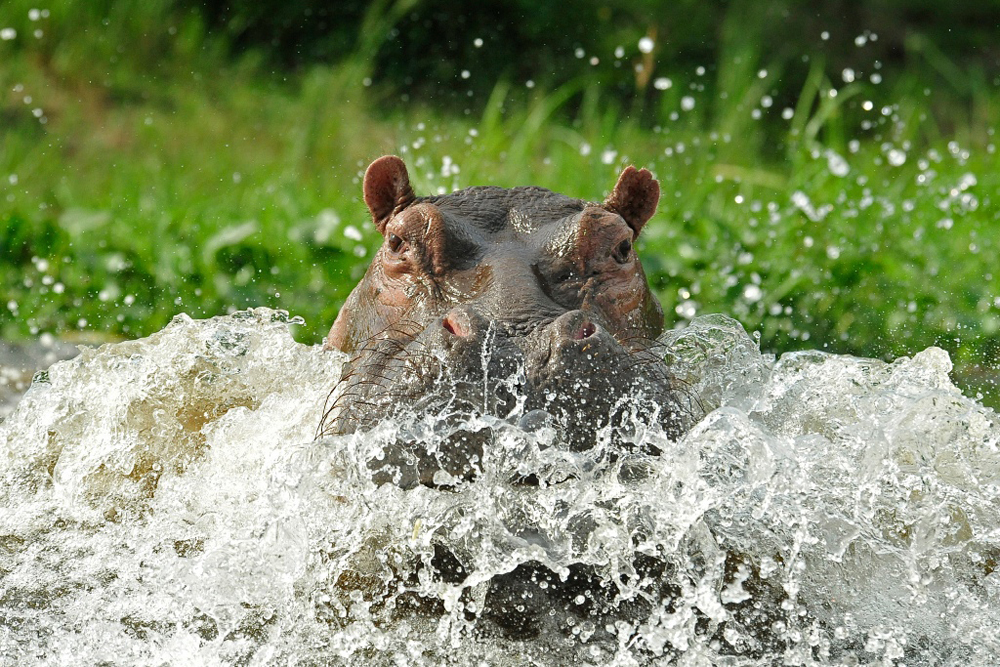
Hippos are territorial creatures and can be aggressive when defending their space.
Showing out
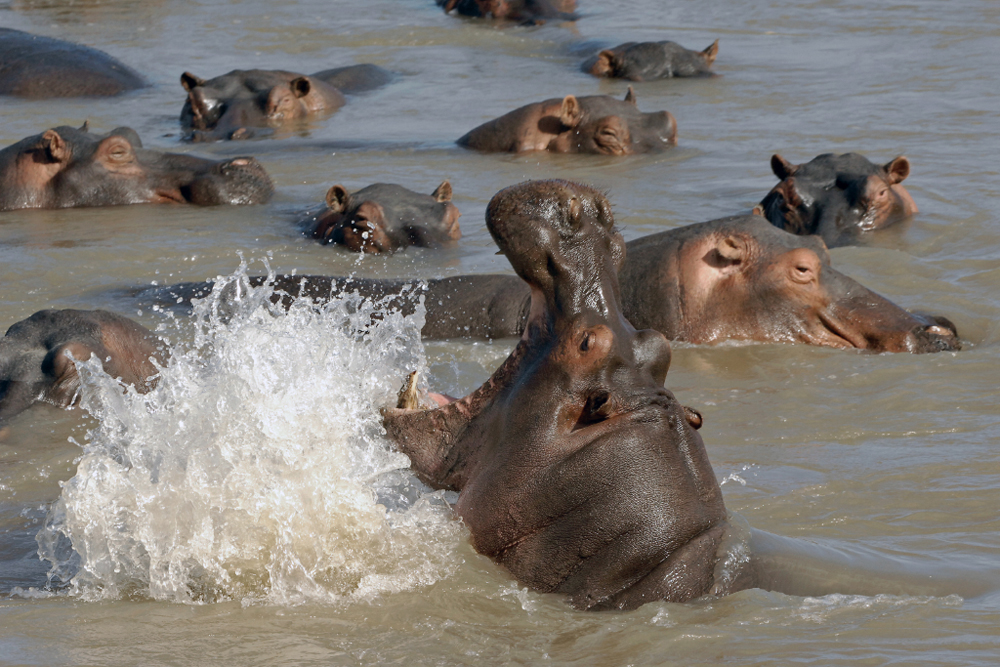
Hippos live in social groups in rivers, where occasional conflicts are often settled with a threat display that looks like a yawn.
Useful design
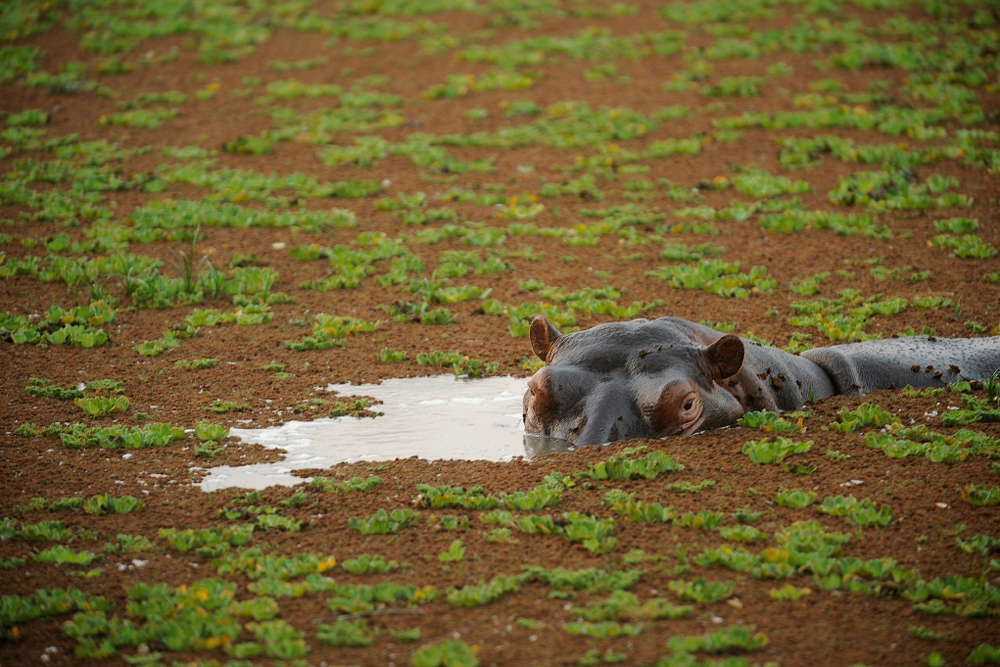
A hippo's eyes are located near the top of its head, allowing the animal to see just above the water when it is submerged.
Social ties and protection

Young hippos are called calves and join schools, or groups, of hippos soon after they are born. The schools provide protection from predators.
Night owls...
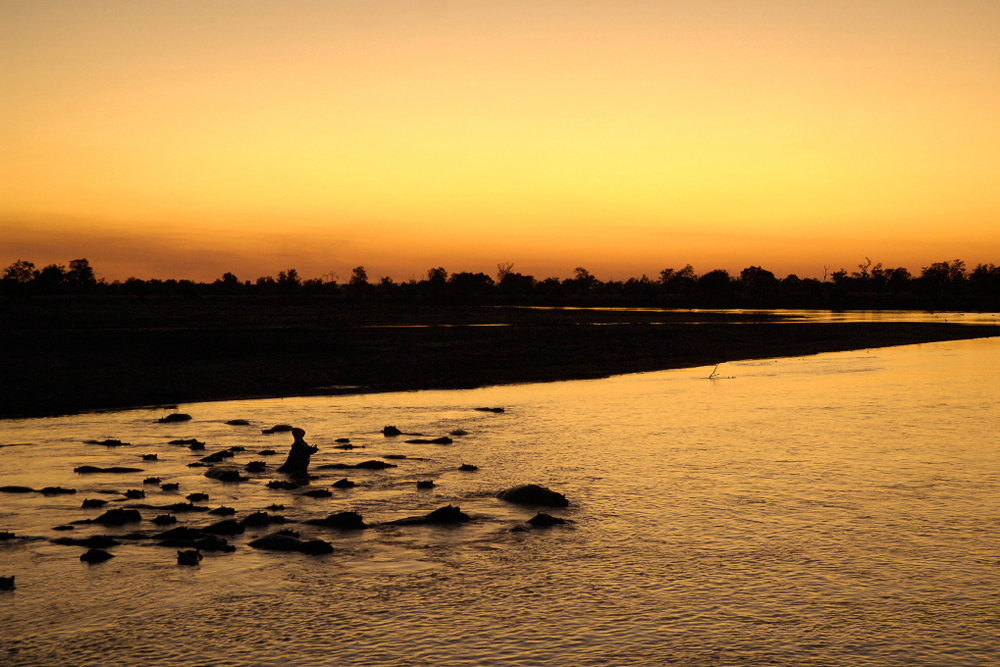
Hippos are active after sunset. Some leave the rivers to feed, while others stay behind in the water, exchanging places throughout the night.
Leisure and comfort
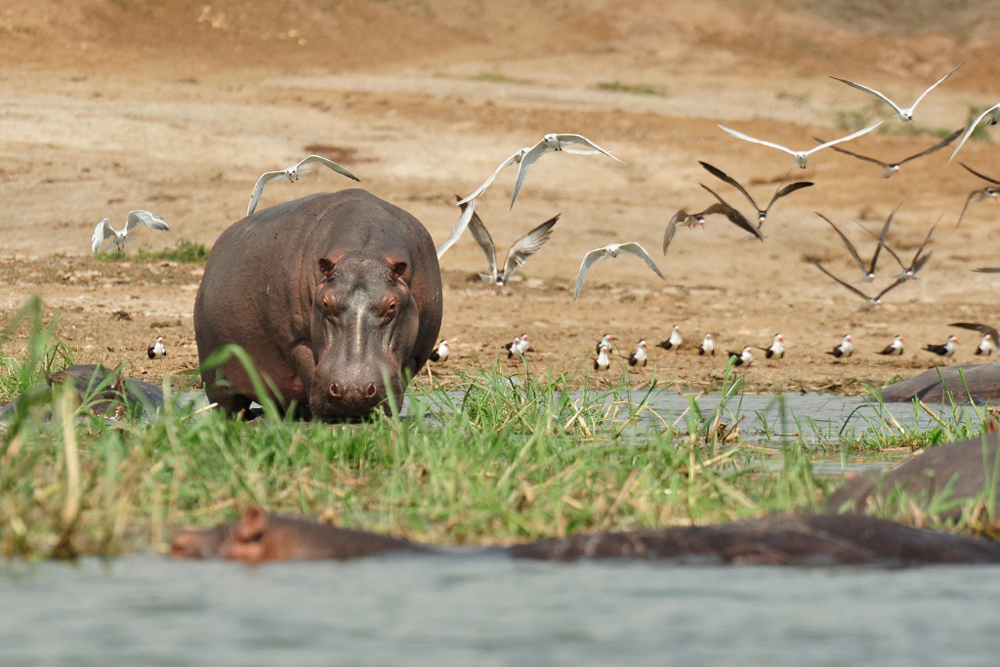
Hippos can be found basking on the banks of rivers but stay close to the water to take a swim and cool off from the hot sun.
Family bonds
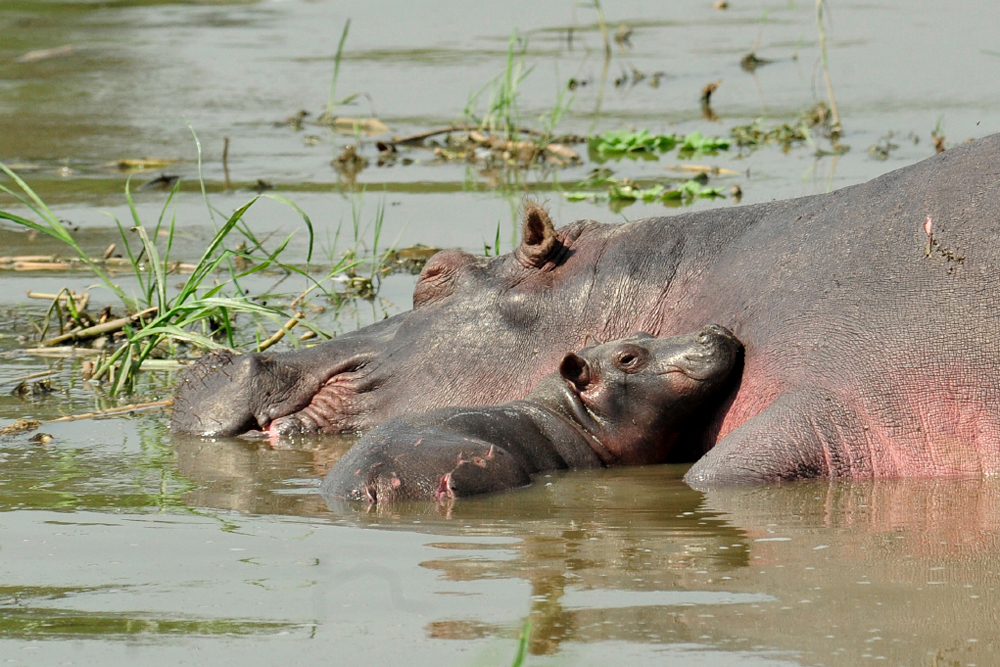
Hippo babies, called calves, weigh around 100 lbs. (45 kilograms) at birth. They stay close to their mothers in and out of the river for protection against crocodiles and other predators.
Disputes and threats
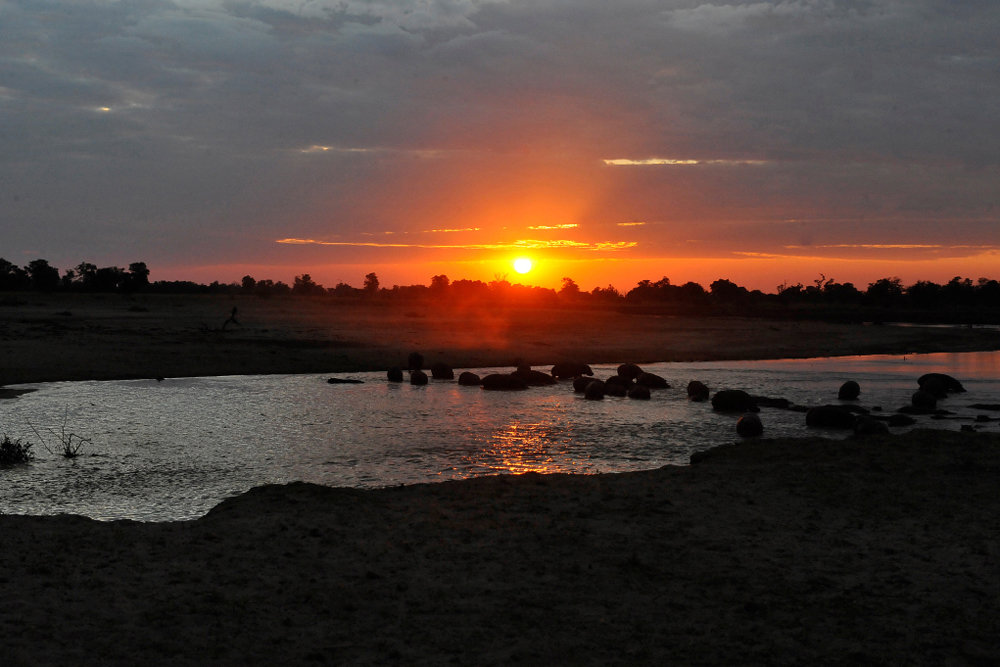
Freshwater habitat is essential to hippos' daily activities. Growing conflicts with humans who use water for agriculture are putting pressure on hippo populations.
Fighting for love
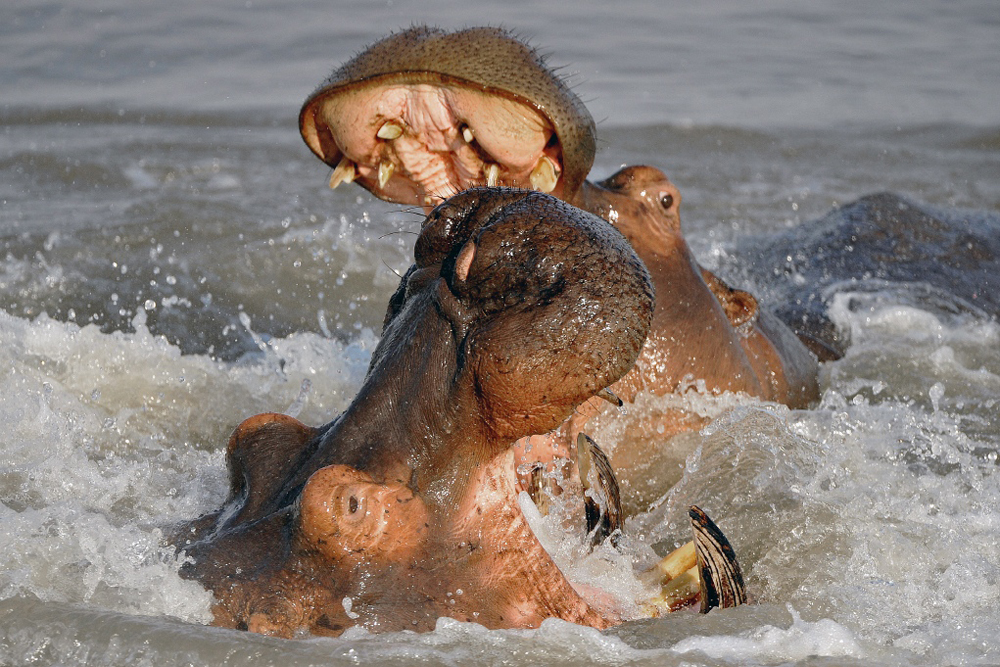
Male hippos fight for breeding rights in aggressive battles that can leave scars from the animals' long canine teeth.
Little helpers
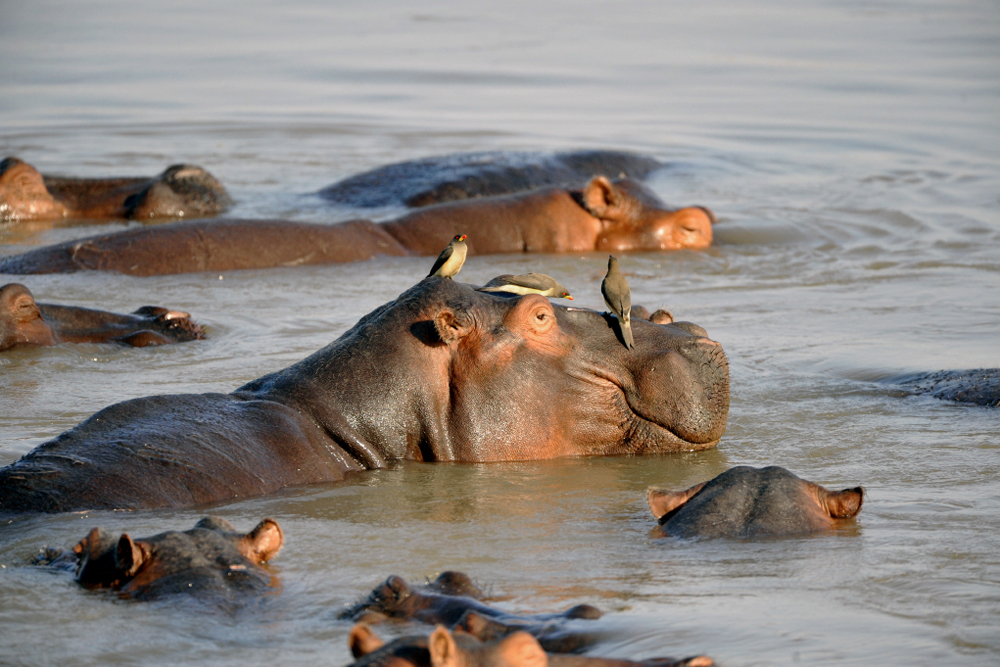
Oxpeckers can be found sitting on the heads and bodies of hippos, where the birds spend time cleaning parasites from the hippos' skin.
Creatures of few words
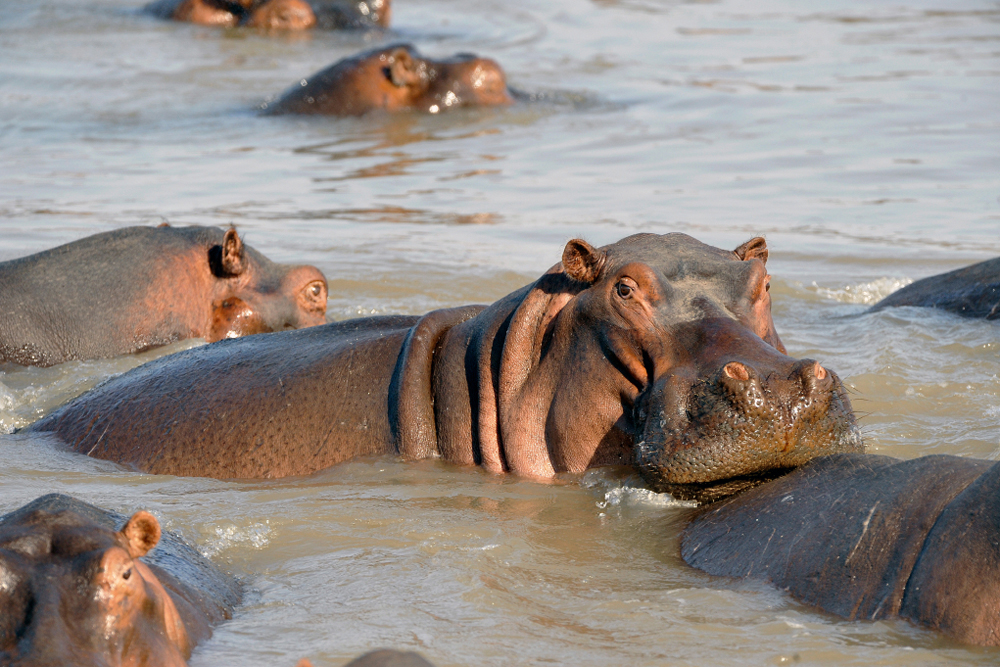
Hippos make loud grunts and bellows in the water and on the banks both day and night. These are the only known calls by amphibious mammals.
Threatened home
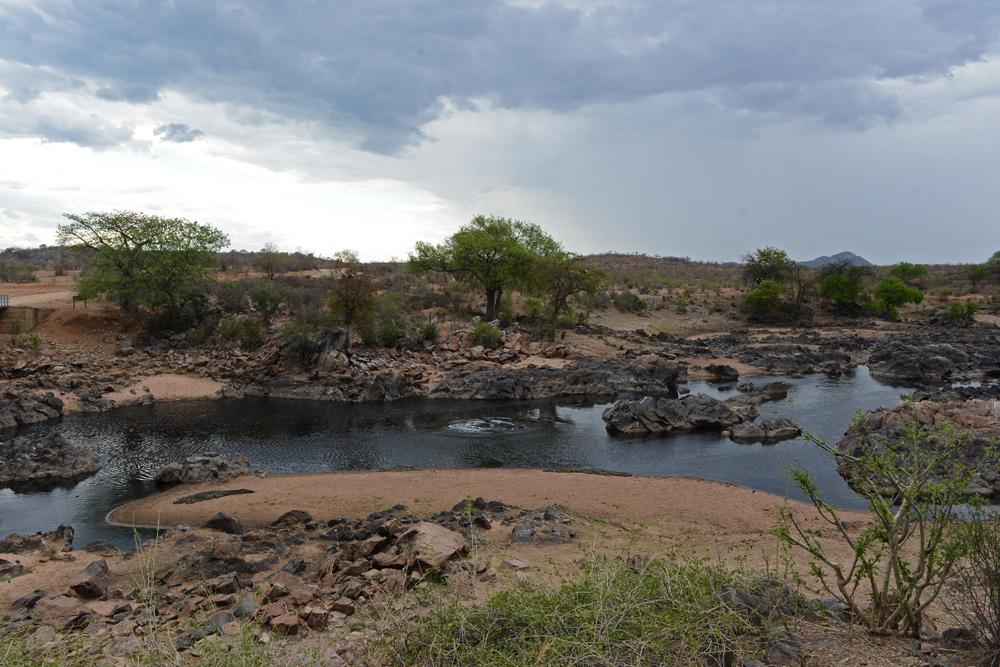
Habitat loss due to agriculture and human development threaten hippo homes in places like the Great Ruaha River in Tanzania.
See More of Julie's work on the WCS Wild View photo blog.
Follow all of the Expert Voices issues and debates — and become part of the discussion — on Facebook, Twitter and Google+. The views expressed are those of the author and do not necessarily reflect the views of the publisher. This version of the article was originally published on Live Science.










